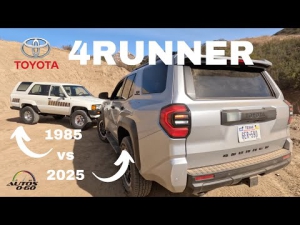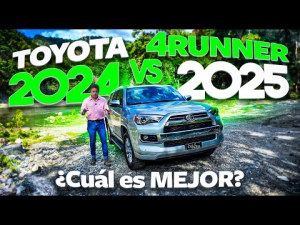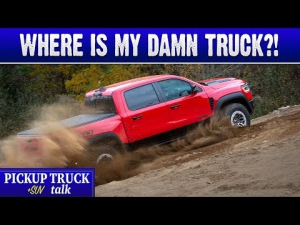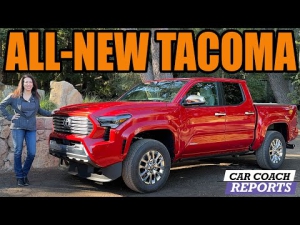Lawyer Shares Details on Toyota Class-Action Lawsuit Over 4Runner Rust
Mid-August saw news of the latest Toyota class-action lawsuit and recall extravaganza, involving premature rust on frames of 4Runners from 2003-2009. Owners of this vintage 4Runner found significant portions of their car’s undercarriage rusted through, presenting a severely threatening driving experience.
Lead Plaintiff Gary Weinreich brought this issue to Environmental Litigation Group, P.C.’s (ELG) attention when his 4Runner experienced a problem. Its steering control arm broke while Gary was driving, causing him to run off of the road. Associate Attorney Chandler Duncan spoke to us about some details surrounding the case.
How does a class-action lawsuit work?
“We were an assessment firm at first. Now we do all sorts of toxic exposures, product liability, etc.” Duncan said. She has a master’s in public health, which means this case is right up her alley. “We have 100 clients or more,” Duncan said. “Everything is still in its infancy. [A class-action lawsuit] can take a massive group, a relatively small group, a community, or a neighborhood.” Duncan said. “It varies, depending on if it’s a personal injury or toxic exposure. It all depends.”
Duncan illustrated that a firm must prove “similarity” to mount a class-action lawsuit. In the eyes of the law, “similarity” is achieved when elements that are similar to each other can be perceived as a unified group. “Typically the plaintiff has to be similarly situated. The law doesn’t specify how many there has to be,” Duncan said, “but two isn’t enough. It could be more than 100,000.”
Could this case include personal injury?
“Currently this case is just product liability,” Duncan said, “but there is potential for it to be personal injury as well because when you have a defective vehicle, it’s very dangerous.” In this case, the lack of personal injury doesn’t necessarily make Weinreich’s case weaker, according to Duncan.
“We still have a huge products liability issue where Toyota manufactured a defective product and then sold it to consumers,” Duncan said. “We have documentation that shows they likely knew the 4Runner was defective for a long time.”
According to Duncan, Toyota never said anything to consumers about the rust problem. “That in and of itself is a massive lawsuit and makes a good case,” Duncan said. However, there is still room for a personal injury case. “Adding personal injury to that is just a separate case of similar proportions.”
Toyota responsible for Dana Holding Corporation’s failure

“Typically when we first get a client we’ll ask for a picture of the rust, and a copy of their title to make sure they own the vehicle,” Duncan said. “We know the defective 4Runners were manufactured from 2003-2009 by Dana Holding Corporation.” Dana Holding Corporation was founded in 1904 and supplies parts for conventional, hybrid, and electric vehicles.
“We know Dana Holding defectively manufactured Toyota 4Runners and failed to put the anti-corrosion agent on the frame and undercarriage of the vehicle,” Duncan said. “…if you purchased a 4Runner that was manufactured between those dates it is likely defective.”
Even though Dana Holding manufactured defective parts, Toyota is still to blame. “The complaint is against Toyota North America,” Duncan said. “When you sell a product, even if it was manufactured by someone else, you’re signing off on that product being safe and sound, and good for consumer use.” Duncan continued, “Toyota had to “OK” all of the decisions.”
Toyota settled a lawsuit for $3.4 billion in 2016, for similar frame rust issues with Toyota Tacomas from 2005-2010, Sequoias from 2005-2008, and Tundras from 2007-2008. Dana Holding supplied the frames for those vehicles as well.
When will Toyota settle the class-action lawsuit?
Duncan surmises the case is still a few years away from completing. “Large cases like this tend to take several years,” Duncan said. “The initial complaint was filed in late 2018, so it’s still kind of in its infancy.”
ELG prides itself on treating each client with compassion. They recognize their clients put their faith in a product that turned out to be dangerous. “Our lead attorney was an industrial hygienist before he was an attorney,” Duncan said, “so he knows about chemicals and rusting, and specifics on the products liability side of this case.”
Duncan says her and her associate’s educations allow them to serve their clients better. Their combined education background “comes together to give us a modern approach to the law,” Duncan said. “We understand the law, but we also understand the science and the medicine behind these specific kinds of cases, which is extremely helpful.”
RELATED: Has Toyota Fixed the Paint Problems on Tacomas?
The post Lawyer Shares Details on Toyota Class-Action Lawsuit Over 4Runner Rust appeared first on MotorBiscuit.







